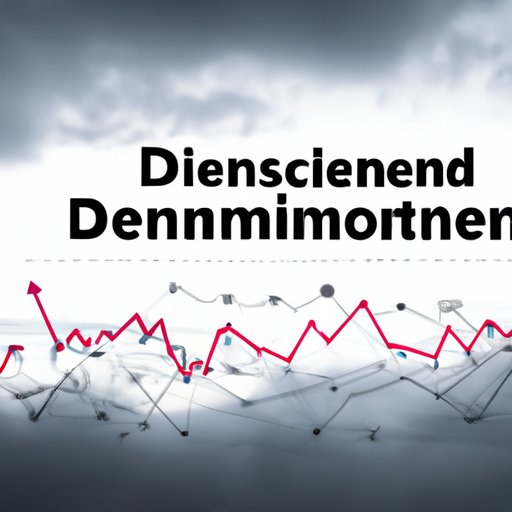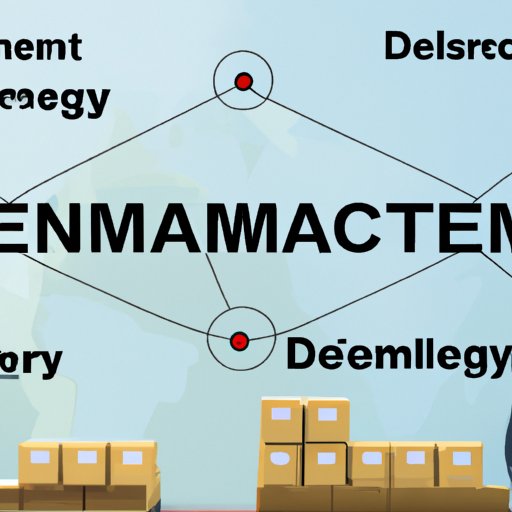Introduction
Demand forecasting is a vital component of supply chain management (SCM). It involves predicting customer demand for products or services to ensure that businesses are prepared to meet those demands. By accurately forecasting demand, companies can optimize their supply chains and maximize profits.
Definition of Demand Forecasting
Demand forecasting is the process of estimating future customer demand for a product or service. It enables companies to anticipate consumer needs and plan resources accordingly. Companies use demand forecasting to determine how much inventory they need to stock, when to order new goods, and how to allocate resources in order to meet customer demand.

Overview of Supply Chain Management
Supply chain management (SCM) is the coordination of all activities involved in the production and delivery of goods and services. It includes planning, sourcing, manufacturing, logistics, and customer service. The goal of SCM is to deliver products and services to customers as quickly and efficiently as possible.
Exploring the Benefits of Accurate Demand Forecasting
Accurate demand forecasting is essential for effective SCM. According to a study by McKinsey, companies that use analytics to forecast demand have seen an average of 6-8 percent improvement in sales and margin growth. Here are some of the key benefits of accurate demand forecasting:
Improved Decision Making
Accurate demand forecasting allows companies to make better decisions about how to allocate resources. By understanding customer demand and anticipating future trends, companies can adjust their operations to maximize efficiency and profitability.
Increased Efficiency and Profitability
Accurate demand forecasting helps companies optimize their supply chains and improve their bottom line. By understanding customer demand and anticipating future trends, companies can adjust their operations to maximize efficiency and profitability. This leads to cost savings and increased revenue.
Reduced Risk
Accurate demand forecasting reduces the risk of overstocking or understocking inventory. This helps companies avoid expensive losses due to inventory surpluses or shortages.

Understanding the Challenges Involved in Demand Forecasting
Despite the numerous benefits of accurate demand forecasting, there are several challenges associated with it. These include data accuracy, short-term vs long-term forecasts, and seasonal variations.
Data Accuracy
One of the biggest challenges in demand forecasting is ensuring the accuracy of data. Companies must collect and analyze data from multiple sources in order to accurately predict future demand. This requires sophisticated systems and processes to ensure that data is reliable and up-to-date.
Short-Term vs Long-Term Forecasts
Demand forecasting can be difficult because companies must balance short-term and long-term forecasts. Short-term forecasts are used to plan for immediate needs, while long-term forecasts are used to plan for future growth. Companies must be able to accurately forecast both short-term and long-term demand in order to optimize their supply chains.
Seasonal Variations
Seasonal variations can also complicate demand forecasting. Companies must understand how seasonality affects customer demand in order to accurately forecast demand. For example, a company may experience a surge in demand during the holiday season and must prepare for this in advance.
How to Implement Effective Demand Forecasting Strategies
In order to implement effective demand forecasting strategies, companies must first identify key drivers of demand. This includes understanding customer behavior, market trends, and seasonal fluctuations. Companies must also leverage automation and utilize AI and machine learning to gather and analyze large amounts of data.
Identifying Key Drivers
The first step in implementing effective demand forecasting strategies is to identify the key drivers of demand. This includes understanding customer behavior, market trends, and seasonal fluctuations. By monitoring these factors, companies can anticipate changes in demand and adjust their operations accordingly.
Leveraging Automation
Companies should also leverage automation to streamline their demand forecasting processes. Automation enables companies to quickly and accurately gather and analyze data, which helps them make better decisions about resource allocation.
Utilizing AI and Machine Learning
Finally, companies should utilize AI and machine learning to improve their demand forecasting capabilities. AI and machine learning enable companies to quickly and accurately analyze large amounts of data, which helps them make better decisions about resource allocation.
The Impact of Demand Forecasting on Inventory Management
Accurate demand forecasting is essential for effective inventory management. By understanding customer demand and anticipating future trends, companies can optimize their stock levels and minimize dead stock. This helps companies reduce lead times and ensure that customers receive their orders on time.
Optimizing Stock Levels
Accurate demand forecasting helps companies optimize their stock levels. By understanding customer demand and anticipating future trends, companies can ensure that they have enough inventory on hand to meet customer needs. This helps companies avoid expensive losses due to inventory surpluses or shortages.
Minimizing Dead Stock
Accurate demand forecasting also helps companies minimize dead stock. By understanding customer demand and anticipating future trends, companies can ensure that they don’t overstock inventory that won’t sell. This helps companies avoid costly losses due to unsold inventory.
Reducing Lead Times
Finally, accurate demand forecasting helps companies reduce lead times. By understanding customer demand and anticipating future trends, companies can optimize their supply chains and ensure that customers receive their orders on time. This helps companies improve customer satisfaction and loyalty.

Analyzing the Different Types of Demand Forecasting Techniques
There are several different types of demand forecasting techniques available. These include qualitative methods, quantitative methods, and combination methods. Here is a brief overview of each technique.
Qualitative Methods
Qualitative methods involve gathering information from experts and other stakeholders to make predictions about future demand. This type of forecasting is subjective and relies heavily on the expertise of the people involved. Qualitative methods are best suited for short-term forecasts.
Quantitative Methods
Quantitative methods involve collecting and analyzing data to make predictions about future demand. This type of forecasting is more objective and relies heavily on mathematical models and historical data. Quantitative methods are best suited for long-term forecasts.
Combination Methods
Combination methods involve using a combination of qualitative and quantitative methods to make predictions about future demand. This type of forecasting combines the subjectivity of qualitative methods with the objectivity of quantitative methods. Combination methods are best suited for medium-term forecasts.
Conclusion
Demand forecasting is a vital component of supply chain management. It enables companies to anticipate customer demand and plan resources accordingly. Accurate demand forecasting has numerous benefits, including improved decision making, increased efficiency and profitability, and reduced risk. However, there are several challenges associated with demand forecasting, including data accuracy, short-term vs long-term forecasts, and seasonal variations. Companies must implement effective demand forecasting strategies, such as identifying key drivers, leveraging automation, and utilizing AI and machine learning. Finally, accurate demand forecasting has a significant impact on inventory management, as it helps companies optimize their stock levels, minimize dead stock, and reduce lead times.
(Note: Is this article not meeting your expectations? Do you have knowledge or insights to share? Unlock new opportunities and expand your reach by joining our authors team. Click Registration to join us and share your expertise with our readers.)
